Introduced in the media coverage such as newspaper, magazines, and Japan Broadcasting co.(NHK).
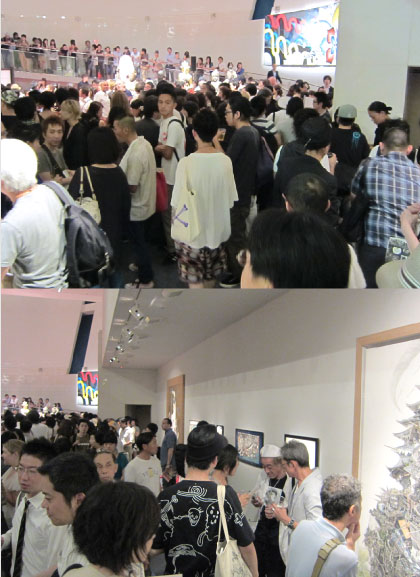
Date : 2010, Aug 4th ~ 7th
Place : Spiral Garden 1F
5-6-23 Aoyama Minatoku Minami Tokyo
Producer/Curator : Hisashi Tenmyoya
More than 2,000 people attended the opening reception on August 4th and the 4 day-exhibition drew over 6000 people. Attracting a surprising number of people, I believe it was a fabulously successful event.
I exhibited several Kawari Kabuto (extraordinary helmets) from the Momoyama and Edo periods, covering the 16th and 17th centuries.
The Samurai armor crafted hundreds of years ago, while crucial pieces of the warrior’s gear, were also prominent displays of artistic expression in the life and death arena of the battlefield. They played a symbolic role as well. The beauty of the Kawari Kabuto are astonishing, and they can still serve to remind us of this and stimulate our sense of beauty in the modern world.
This exhibition was an excellent opportunity to showcase this uniquely Japanese aesthetic in culture and art.
Tateki Morisaki
Basara is a term in Japanese aesthetics associated with challenging traditional ideals during the Nanbokucho period. It also referred originally to those who were unconventionally dressed and embraced individualistic styles in a form of protest against authority figures.
The refinement and grace of Bushidou, or the Samurai way, and a rebellious spirit both appeal to the aesthetic sense of Basara. Essentially, this style was comprised of two elements, that of individuality and of an extravagant, epicurean life style. This exhibition showcased various forms of Japanese traditional art such as Jomondoki (pottery from Jomon era), Kawari Kabuto, Ukiyoe, Yakimono and traditional Japanese tattoos as well as modern art. Challenging a fixed idea of Japanese culture and tradition was the focus of this exhibition, which was an attempt to rediscover the aesthetic sensibilities of the Basara.
Tenmyouya Hisashi (sponsor, planner, curator)
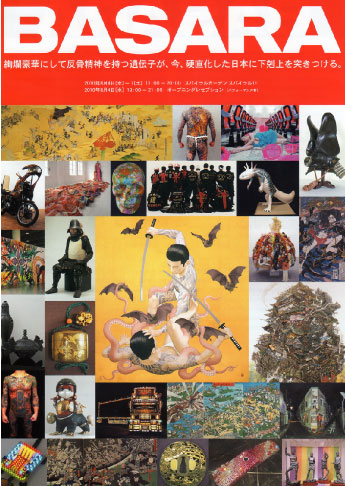
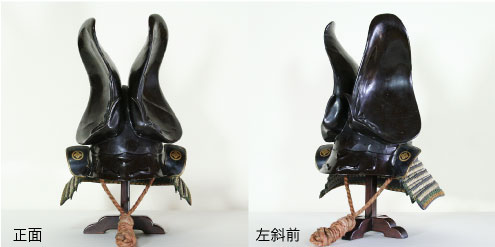
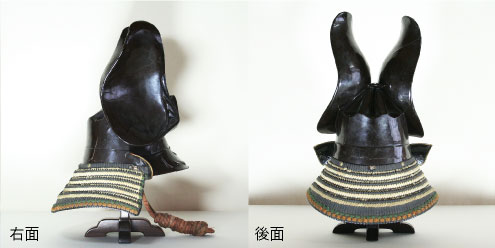
| Type of Kabuto | Harikake Kabuto. The helmet bowl is Tokin-Nari. |
|---|---|
| Tokin-Nari | The type of helmet worn by the Yamabushi, Japanese mountain ascetic hermits. It is a 12-sided dodecahedron cap, which symbolizes the buddhist concept of 12 factors that mutually influence the fate of human lives. The Twelve Nidānas reveal the origins of mental phenomena, and the feedback loop of conditioning and causation that leads to suffering in current and future lives. |
| Shell-shaped helmet | Shell is pronounced Kai in Japanese. Kai also represent one’s achievements. Shell-shaped helmets were common because they symbolized the two ideals of protection and stoicism. |
| Clam-shaped helmet | They are hard to open, which symbolizes to a close-mouthed nature. |
| Tokin-Nari and Clam-shaped design | It refers to the Samurai’s determination to vanquish foes. The Tokin-Nari symbolizes the Yamabushi, mighty warriors endowed with supernatural powers that defeated their enemies thru a type of magical possession. The clam is also a symbol of the strength required to break thru other’s protective shells. |
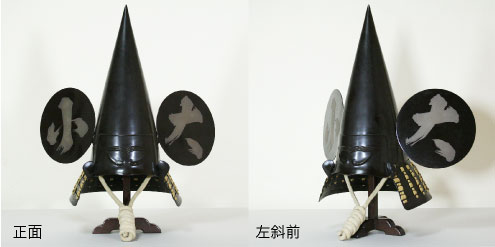
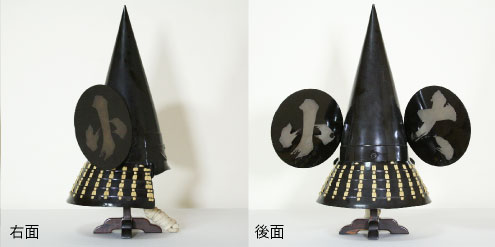
| Origin | Belonged to a chief retainer in the Tosa-Yamanouchi family. |
|---|---|
| Meaning of Wakitate (decorative design on the side of the helmet) | The symbol is [small] and [big] in Chinese character, which refers to all the facts and information, covering a complete range, as it is similar to the meaning of [from A to Z]. |
| The meaning of the design | It represents a piercing power like that of an awl. |
| The reason for the tall and large design | The battle fields were mainly flat, open, and afforded a sweeping view. Tall helmets or helmets with larger decorations were spotted easily from a distance and these proud helms were displays of their owner’s dignity. |